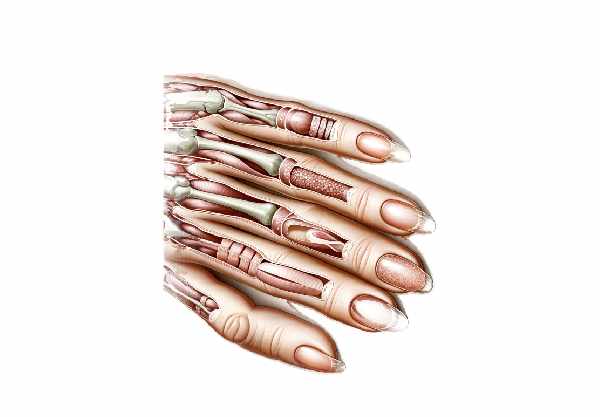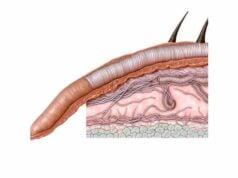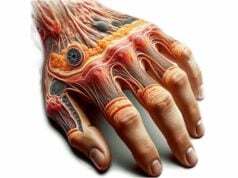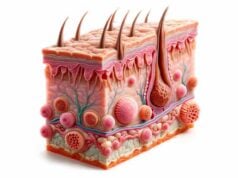
Nails are much more than a cosmetic feature; they serve as vital protectors of our fingertips and toes while providing clues to our overall health. These hard, keratin-rich structures support fine motor skills, enhance sensory perception, and contribute to our appearance. In this comprehensive guide, we explore the intricate anatomy of nails, their key physiological functions, common conditions affecting them, and a wide range of treatment and preventive strategies. Whether you’re looking to improve nail health or better understand what your nails reveal about your body, this article offers expert insights into one of the body’s most telling organs.
Table of Contents
- Intricate Nail Structure
- Physiological Roles & Functions
- Frequent Nail Disorders
- Diagnostic Techniques
- Modern Treatments & Therapies
- Nutritional & Supplementary Support
- Lifestyle & Preventive Practices
- Trusted Resources
- Frequently Asked Questions
Intricate Nail Structure
Nails are complex structures composed of multiple layers and specialized regions that work together to protect the delicate tips of our digits. Understanding the anatomy of nails can provide insight into how they grow, their role in our overall health, and what changes in their appearance might signal.
Nail Plate
The nail plate is the hard, translucent, and visible part of the nail. Composed primarily of densely packed, keratinized cells, it forms the protective shield for the distal phalanx. The nail plate originates in the nail matrix and gradually spreads outward over the nail bed. Its strength and integrity are crucial not only for protection but also for aesthetic appeal.
Nail Bed
Situated directly beneath the nail plate, the nail bed is a highly vascularized tissue that supports the nail. It extends from the nail matrix to the hyponychium and contains blood vessels that give the nail its characteristic pink hue. The nail bed is essential for providing nutrients and oxygen, ensuring proper nail growth and health.
Nail Matrix
Hidden beneath the proximal nail fold, the nail matrix (or keratogenous membrane) is responsible for producing the cells that form the nail plate. The health and activity of the matrix directly influence the thickness, shape, and strength of the nail. As new cells are generated, older ones are pushed forward, becoming compacted and keratinized to form the hard nail.
Nail Folds
Nail folds are the skin edges that surround the nail plate on three sides (proximal and lateral). They help secure the nail in place and create a protective barrier. The cuticle, a thin layer of dead skin at the base of the nail, originates from the nail fold and serves to protect the emerging nail from infections and external damage.
Lunula
The lunula is the visible, crescent-shaped whitish area at the base of the nail plate. It is part of the nail matrix and is most prominent on the thumb. The white appearance is due to the thick, compacted keratin that obscures the underlying blood vessels. Although not visible on all nails, the lunula is an important indicator of nail health and matrix activity.
Hyponychium
Located beneath the free edge of the nail plate, the hyponychium is the skin that acts as a seal between the nail and the fingertip. It prevents pathogens from entering the nail bed and plays a critical role in maintaining the overall integrity of the nail unit.
Perionychium
The perionychium comprises the skin that overlaps the sides of the nail plate, including the lateral nail folds. This structure is essential for protecting the edges of the nail matrix and the nail bed from external trauma and infection.
Onychodermal Band
The onychodermal band forms the junction between the nail plate and the hyponychium. This thin line of tissue reinforces the seal that keeps bacteria and foreign materials from infiltrating the nail bed, further contributing to the nail’s protective functions.
Growth and Regeneration
Nail growth is a continuous process that begins in the nail matrix. On average, fingernails grow about 3 mm per month, although this rate can vary based on factors such as age, health, and environmental conditions. Nails not only serve as a window into our health but also regenerate to repair minor injuries, making them a dynamic component of the integumentary system.
Age and Physiological Changes
As we age, nail growth and quality can change. Nails may become brittle, develop ridges, or change in color. While these alterations are common, they can also indicate underlying nutritional deficiencies or systemic conditions, making regular monitoring of nail health an important aspect of overall wellness.
Physiological Roles & Functions
Beyond their cosmetic value, nails play several key roles in our daily lives. They are integral to protecting our fingertips, enhancing sensory perception, and contributing to fine motor skills. Here, we delve into the multiple functions that nails serve.
Protection
Nails act as a rigid shield, protecting the distal phalanges and the sensitive soft tissues of the fingertips from mechanical trauma, environmental hazards, and infections. By covering and reinforcing the tips of our fingers and toes, nails help prevent injuries during activities that involve grasping, scratching, or handling objects.
Sensory Enhancement
The presence of a hard nail underlies the delicate sensory receptors in the fingertips. Nails provide a counterforce when touching objects, enhancing tactile sensitivity and enabling fine discrimination of textures and temperatures. This enhanced sensory feedback is crucial for tasks that require precision, such as picking up small objects or performing intricate manual activities.
Precision Grip and Fine Motor Control
Nails contribute significantly to our ability to grip and manipulate objects. By supporting the fingertip, nails increase the surface area and stability needed for a secure and precise grip. This function is essential for everyday tasks, from writing and typing to performing delicate crafts or operating tools.
Historical Tool Function
Historically, nails have served as natural tools for scratching, picking, or even cutting. While modern technology has largely replaced these primitive functions, the inherent strength and durability of nails continue to provide subtle advantages in tasks that require extra grip or manipulation.
Aesthetic and Social Significance
The appearance of our nails often reflects our personal hygiene, health, and even social status. Nails are a canvas for self-expression through manicures, nail art, and polish, contributing to one’s overall aesthetic appeal. This cultural and social significance underscores the importance of maintaining healthy nails not only for physical well-being but also for self-esteem and social interactions.
Growth, Renewal, and Homeostasis
The constant growth and renewal of nails serve as a barometer for overall health. Nails can indicate nutritional status, hormonal balance, and systemic diseases. Their continuous renewal helps protect underlying tissues, contributing to the maintenance of homeostasis by acting as a barrier against external insults and infection.
Frequent Nail Disorders
Nail disorders can range from minor cosmetic issues to significant health problems that signal underlying systemic conditions. Recognizing these conditions early on is crucial for effective treatment and maintaining overall nail health.
Fungal Infections (Onychomycosis)
Fungal infections of the nails, known as onychomycosis, are one of the most common nail conditions. Caused by dermatophytes, yeasts, or molds, these infections typically result in nail thickening, discoloration (often yellow or brown), and a crumbling or brittle texture. Onychomycosis can be persistent and challenging to treat, often requiring prolonged courses of topical or oral antifungal medications.
Nail Psoriasis
Psoriasis affecting the nails can cause pitting, abnormal nail growth, discoloration, and nail loosening (onycholysis). Nail psoriasis not only poses aesthetic concerns but can also be painful and impair function. Treatment may involve topical steroids, vitamin D analogs, or systemic therapies if the condition is severe.
Traumatic Nail Injuries
Nail trauma is common and can result from crush injuries, cuts, or repeated microtrauma from activities like typing or manual labor. Such injuries may cause immediate pain, bleeding, and eventually lead to nail deformities or permanent damage if the nail matrix is affected. Prompt treatment is essential to minimize long-term effects.
Ingrown Nails
Ingrown nails, especially common in toenails, occur when the nail edge grows into the surrounding skin. This condition can lead to pain, redness, swelling, and sometimes infection. Ingrown nails often result from improper nail trimming, tight footwear, or congenital nail abnormalities, and may require conservative treatment or surgical intervention in severe cases.
Nail Biting (Onychophagia)
Chronic nail biting is a behavioral condition associated with stress and anxiety. It can cause damage to the nail plate, nail bed, and cuticle, leading to infections and permanent nail deformities. Behavioral therapies and stress management techniques are often recommended to address this habit.
Yellow Nail Syndrome
Yellow nail syndrome is a rare condition characterized by thickened, slow-growing, yellowish nails. It is often associated with respiratory issues, lymphedema, and other systemic conditions. Although the exact cause is unknown, yellow nail syndrome may serve as an indicator of underlying health problems.
Brittle Nail Syndrome
Brittle nails are characterized by splitting, cracking, and a propensity to break easily. This condition can be caused by factors such as prolonged exposure to water or chemicals, nutritional deficiencies, or systemic diseases. Proper nail care and nutritional supplementation can help alleviate brittle nails.
Diagnostic Techniques for Nail Health
Accurate diagnosis of nail disorders is key to effective treatment. A range of diagnostic techniques is employed to assess nail health, determine the underlying cause of abnormalities, and guide treatment decisions.
Visual Examination
A thorough visual inspection of the nails is often the first step in diagnosing nail conditions. Healthcare providers look for changes in color, texture, thickness, and shape. Specific patterns, such as pitting, ridging, or discoloration, can provide important clues about underlying systemic issues.
Dermatoscopy
Dermatoscopy is a non-invasive diagnostic technique that uses magnification and specialized lighting to examine the nail and surrounding skin in detail. This method is especially useful for evaluating pigmented lesions, the nail matrix, and subtle changes that may indicate early disease.
Nail Clipping Analysis
Microscopic examination of nail clippings can reveal the presence of fungal elements, bacteria, or other pathogens. This simple yet effective test is particularly useful in diagnosing onychomycosis and can also help in monitoring treatment progress.
Biopsy
In cases where malignancy or ambiguous pathology is suspected, a nail biopsy may be performed. This procedure involves removing a small portion of the nail or nail bed for histopathological examination, providing definitive diagnostic information.
Culture Techniques
Culture of nail samples allows for the identification of fungal, bacterial, or viral pathogens. This method is critical when infections are suspected and can guide the selection of appropriate antimicrobial treatments.
Imaging Modalities
Advanced imaging techniques such as X-rays, MRI, or bone scans are occasionally used when there is suspicion of underlying bone involvement, trauma, or tumors affecting the nail unit. These imaging studies can also help in planning surgical interventions.
Capillaroscopy
Capillaroscopy involves the examination of the capillaries in the nail fold using high-resolution imaging. This technique is particularly useful for diagnosing systemic conditions such as scleroderma or lupus, where nail fold capillary changes may be evident.
Modern Treatments & Therapies
The treatment of nail disorders is tailored to the specific condition, ranging from conservative management to advanced surgical interventions. Advances in medical treatments have greatly improved outcomes for many nail conditions.
Antifungal Therapies
For fungal infections (onychomycosis), both topical and oral antifungal agents are used:
- Topical Antifungals:
Medicated nail lacquers, creams, or solutions are applied directly to the affected nail. - Oral Antifungals:
Systemic agents such as terbinafine or itraconazole are used for more extensive infections. Treatment duration may extend over several months to ensure complete resolution.
Antibiotics
Bacterial nail infections, such as paronychia, are typically treated with appropriate antibiotic therapy. Depending on the severity, topical antibiotics or oral medications may be prescribed to combat the infection effectively.
Corticosteroid Applications
For inflammatory nail conditions such as nail psoriasis, corticosteroids can be administered topically or via intralesional injections to reduce inflammation and promote healing. In some cases, systemic corticosteroids may be used under careful medical supervision.
Surgical Interventions
Nail Avulsion or Removal
In severe cases of trauma, infection, or dystrophy, partial or complete removal of the nail may be necessary. Nail avulsion is performed under local anesthesia and allows for the treatment of the underlying nail bed or matrix.
Laser Therapy
Laser treatments are emerging as a safe and effective option, particularly for onychomycosis and other nail infections. Laser therapy targets pathogens with precision, reducing collateral damage to surrounding tissues and promoting faster recovery.
Nutritional & Supplementary Support
Maintaining nail health is closely linked to overall nutrition. A variety of supplements can enhance nail strength, promote growth, and prevent common disorders.
Biotin
Biotin (vitamin B7) is widely recognized for its role in improving nail thickness and reducing breakage. It supports the production of keratin, the protein that forms nails, and is often recommended for individuals with brittle or weak nails.
Omega-3 Fatty Acids
Found in fish oil and flaxseed, omega-3 fatty acids have anti-inflammatory properties that can help maintain nail moisture and reduce brittleness. These essential fats are crucial for overall cellular health.
Iron
Iron is essential for oxygen transport and energy production. Deficiencies in iron can lead to nail abnormalities such as spoon-shaped nails (koilonychia) and poor nail growth. Supplementing iron in deficient individuals can markedly improve nail appearance and strength.
Zinc
Zinc plays a vital role in protein synthesis and cell division, making it crucial for nail growth. A deficiency in zinc can lead to white spots on the nails and impaired nail development.
Vitamin C
Vitamin C is necessary for collagen synthesis, which supports the integrity of the nail bed and surrounding tissues. Its antioxidant properties also help protect nail cells from damage.
Keratin Supplements
Keratin is the primary protein that forms nails. Supplements containing keratin or ingredients that boost keratin production can help improve nail strength and resilience.
Antioxidants
Antioxidants such as vitamins E and C help neutralize free radicals and protect the nails from oxidative stress, promoting overall nail health and reducing the risk of disorders.
Lifestyle & Preventive Practices
A proactive approach to nail care involves not only proper nutrition and supplementation but also consistent, healthy lifestyle habits. These practices contribute significantly to the overall health and appearance of your nails.
- Maintain a Balanced Diet:
Ensure that your diet is rich in vitamins, minerals, and proteins necessary for nail growth. Foods like lean meats, dairy, fruits, vegetables, and whole grains provide the essential nutrients for strong, healthy nails. - Practice Good Nail Hygiene:
Keep nails clean and dry, and trim them regularly to avoid snags and breakage. Use a gentle nail file and avoid excessive buffing, which can weaken the nail plate. - Moisturize Regularly:
Apply a quality hand and nail moisturizer to prevent dryness and brittleness. Oils such as coconut or jojoba can also help maintain moisture and flexibility. - Limit Exposure to Harsh Chemicals:
When cleaning or using chemicals, wear protective gloves to prevent damage from prolonged exposure. This helps maintain the integrity of both your nails and the surrounding skin. - Avoid Nail Biting and Picking:
These habits can damage the nail bed and lead to infections. Practice stress-relief techniques and consider behavioral strategies to curb these tendencies. - Use Nail-Friendly Products:
Opt for acetone-free nail polish removers and quality nail polishes. Excessive use of harsh chemicals can lead to dryness and discoloration. - Protect Your Nails:
During activities that expose your nails to potential trauma, such as household chores or sports, wear appropriate protective gear like gloves. - Stay Hydrated:
Drinking plenty of water supports overall cell health, including the cells that form your nails. - Regular Check-Ups:
If you notice significant changes in nail color, texture, or growth patterns, consult a dermatologist or healthcare provider. These changes may be indicative of underlying health issues. - Consider Supplements:
If your diet is lacking in key nutrients, consider taking supplements such as biotin, zinc, or omega-3 fatty acids to support nail growth and health.
Trusted Resources and Tools
For additional information and support in maintaining optimal nail health, numerous resources are available. These trusted sources provide scientific insights, practical tips, and community support.
Recommended Books
- “Nail Structure and Product Chemistry” by Doug Schoon:
Offers a detailed exploration of nail composition and the science behind nail care products. - “The Nail Bible” by Sue Marsh:
A comprehensive guide that covers everything from basic nail anatomy to advanced nail care and aesthetics. - “Nails: Therapy, Diagnosis, Surgery” by Richard K. Scher:
A resource geared toward medical professionals, providing in-depth information on nail disorders and treatment options.
Academic Journals
- Journal of the American Academy of Dermatology:
Features peer-reviewed research articles on skin, hair, and nail disorders. - Dermatologic Clinics:
Provides clinical reviews and updates on the latest advancements in the diagnosis and treatment of nail and skin conditions.
Mobile Applications
- My Nails:
An app designed to track nail growth, monitor changes, and offer personalized nail care tips. - NailSnap:
A resource for nail art enthusiasts that also emphasizes maintaining healthy nails through proper care techniques. - Simply Nailogical:
Combines nail art inspiration with practical advice on nail care, offering tutorials and tips for optimal nail health.
Frequently Asked Questions
What is the primary function of nails?
Nails protect the distal phalanges and soft tissues of the fingertips and toes, enhance tactile sensation, and contribute to fine motor skills and aesthetic appearance.
How do nails grow and regenerate?
Nails grow from the nail matrix, where new cells are produced and gradually compacted to form the nail plate. Factors such as nutrition, health, and age can influence the rate and quality of nail growth.
What are common signs of nail disorders?
Common signs include discoloration, pitting, brittleness, thickening, and changes in shape. These can indicate underlying fungal infections, psoriasis, trauma, or nutritional deficiencies.
How can lifestyle changes improve nail health?
Practicing good nail hygiene, maintaining a balanced diet, staying hydrated, avoiding harsh chemicals, and using appropriate protective measures can significantly enhance nail strength and overall health.
When should I consult a professional about my nail health?
If you notice persistent changes in nail color, texture, or growth patterns, or if you experience pain or signs of infection, consult a dermatologist or healthcare provider for a thorough evaluation.
Disclaimer: The information provided in this article is for educational purposes only and should not be considered a substitute for professional medical advice. Always consult with a qualified healthcare provider regarding any medical concerns.
If you found this article informative, please share it on Facebook, X (formerly Twitter), or your preferred social media platform. Your support helps spread valuable health insights and encourages others to maintain optimal nail health.








